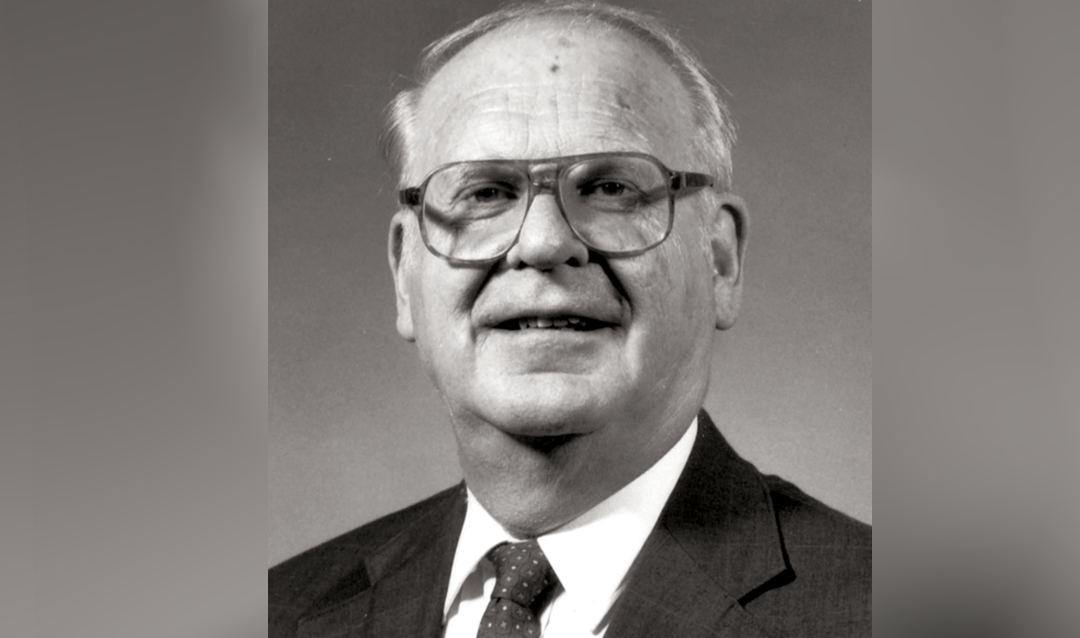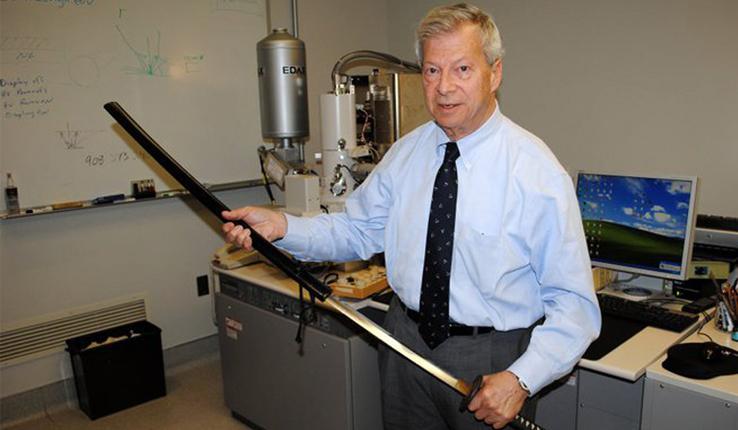James Edward Sturm, 91, professor emeritus of chemistry at Lehigh, passed away peacefully on Thanksgiving Day, Nov. 25, 2021.
Sturm joined Lehigh’s faculty in 1956, where he taught physical chemistry, nuclear chemistry and radiochemistry and pioneered lab reporting protocols. He performed research in chemical kinetics, radiation chemistry, photochemistry and the collisional efficiencies of reactions of high-velocity atoms. He retired in 1995.
Born in New Ulm, Minnesota, on March 28, 1930 to the late Bernard J. Sturm and Magdalene J. Foerster, Sturm cherished childhood memories that included visiting with family, fishing and skating on the Minnesota River and working odd jobs. With no family car, he walked everywhere in the quintessential Midwestern town and never minded the cold.
Inspired by a railroad watch that his father left him, Sturm became an avid watch collector, repairman and expert on antique pocket and railroad watches. He was active in the National Watch and Clock Collectors Association.
An enthusiast of the poet and humorist Ogden Nash, he also was quick with a limerick or pun. He presented many seminars on his work to the senior community.
“Jim was a delightful colleague and accomplished physical chemist, known also for his friendly and supportive disposition, eagerness to help others, ready sense of humor, and love of pocket watches and the poetry of Ogden Nash,” said Greg Ferguson, chair of the department of chemistry at Lehigh.
Sturm graduated from St. John’s University in Collegeville, Minnesota, and earned his Ph.D. in chemistry from the University of Notre Dame. He did postdoctoral work at the University of Wisconsin. Drawing from his upbringing in “The most German town in America,” he used his German skills to translate chemistry journal articles.
Ned Heindel, emeritus Howard S. Bunn Distinguished Professor of Chemistry, said Sturm was the “go-to guy” for Lehigh students striving to master physical chemistry. He said Sturm was generous with his time with struggling students and could explain in multiple ways the meanings behind the P-chem equations. “His approach yielded many grateful students,” Heindel said. “He famously kept very long office hours.”
Additionally, Sturm found many occasions to launch his repertoire of Nashisms. He knew scores of limericks but was especially fond of those with a chemistry connection. “He had the talent to inject just the right Nash verse—whether on an uncommon acid or on DDT—into his classroom lecture,” Heindel said.
With his wife, Margaret Ruth Sturm, who preceded him in death in 2016, Sturm bought the one-room Wassergass Schoolhouse in Lower Saucon, Pennsylvania in 1959 and was the creative force in transforming the school into a family home where they raised seven children. He was also very active in his community. He was a member of St. Theresa of the Child Jesus Roman Catholic Church, Hellertown, Pennsylvania, where he served as a lector.
He was a long-time volunteer and past president of the Saucon Valley Community Center as well as an office holder and volunteer for the Hellertown Historical Society, Lower Saucon Historical Society, Lutz-Franklin Schoolhouse in Lower Saucon, Pa., and a Bushman during the 1976 Bi-Centennial. He was a long-standing member of the American Chemical Society.
Sturm is survived by his children and nine grandchildren.





